In Lima, Arnstein from Young FoE Norway gives an update on what is being currently discussed as the climate talks came to a close
So this post isn’t gonnna go into detail on the whole UNFCCC process, for that I’ll point you in the direction of this excellent post and these clips from [Earth] and CICERO, I’m just gonna do the updates.
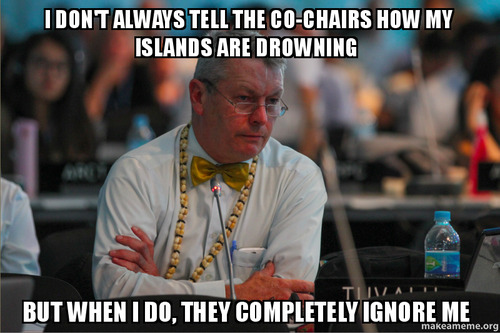
Tuvalu @ UNFCCC climate talks
The last two weeks has been frustrating. While typhoon Haugpit is clashing onto the coast of the Philippines, with a million people evacuated from their homes, negotiators are hardly moving at all in the direction of getting us a deal which will counter climate change.
What’s the fight?
The big fight of this year is the so-called “INDC”s. This secretive acronym encompasses the main disagreement in these year’s negotiations: What will be the scope of the Paris agreement?
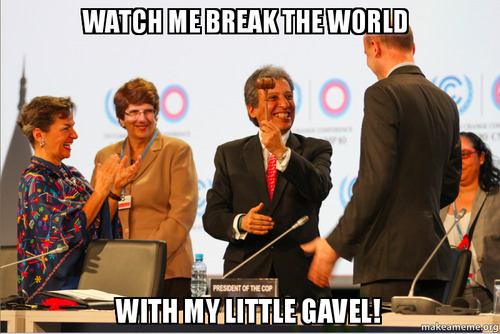
Please meet M.P Vidal, president of this year’s climate conference
Intended Nationally Determined Contributions
So the INDCs are what the different countries intend to contribute to the Paris deal. As the name implies, they are nationally determined, not determined by what’s actually needed. It’s like trying to fix the holes in a sinking ship, only the passengers of the ship will only fix the holes they feel like. Blub blub.
Instead of looking at what’s needed and distributing the responsibility for emission cuts, countries are saying how much they can manage, and we’ll se if it’s enough.
This sums up to the fact that we are not actually discussing the deal we need, or a deal which will avoid further climate change. A new agreement, concluded in Paris in one year, will only take us part of the way.
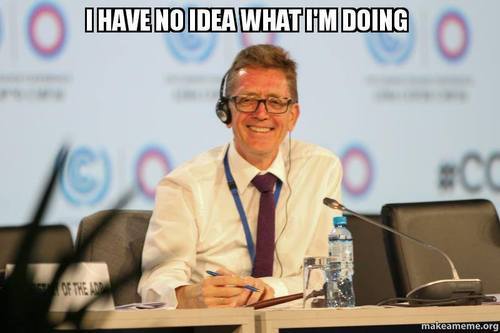
A new agreement in Paris or elsewhere will not counter climate change. Sadly
Okey, so that’s all and good, but if every country can determine their own contribution, why is there any disagreement?
Surviving – not adapting: what’s the deal all about
The countries from the global north presses on for a deal that is only intended for emission cuts. And that sounds reasonable – after all the goal is to turn the emissions curve, isn’t it?
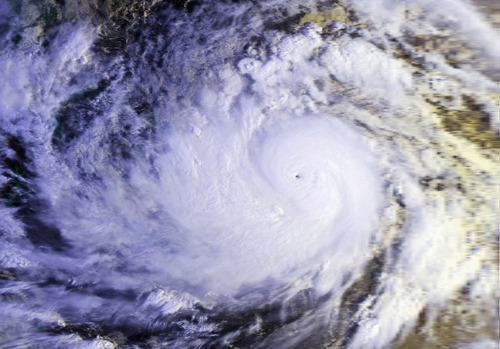
Every year during negotiations, a typhoon has hit the Philippines. Last year resulting in enormous casualities. This year 1 million evacuated in the biggest peace-time evacuation ever
Unfortunately, it’s not that simple.
While some countries might have to refit their drainage systems to adapt to climate change, most developing countries are already struggling to survive the enormous impacts of floods, disasterous typhoons, drought and forest fires. They have firstly to use the funds they have for adapting – or more so: Surviving.
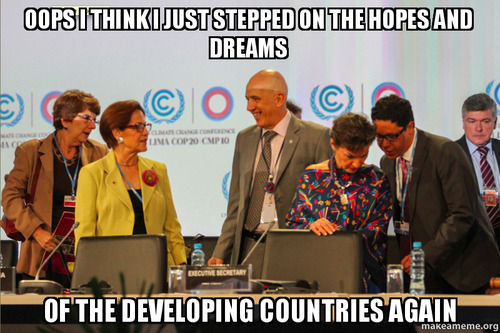
The US and EU usually get to draw their red lines in the negotiations. The red line of Tuvalu is the line to where the sea level reaches. It is rising. And most often ignored.
This is why the disagreements are so big in this year’s negotiations. Countries from the global south are clear: There can be no deal if there isn’t a fair deal.
Is there hope?
On Wednesday, 20 000 people marched the streets of Lima. All over the world people are standing up for climate change. And countries from the global south are not budging.
We won’t get a deal in Paris which is what we need. What’s important, and what we need, is a fair system that enables people all over the world to combat climate change where they live.
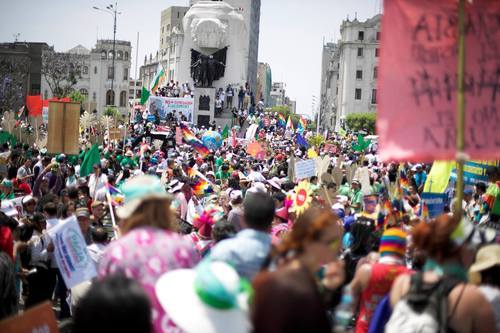
20 000 people marching for an ambitious climate deal
And more importantly
This isn’t the process which will stop further climate change. This isn’t the deal we wanted, and will not be the deal we want. The real climate action has to happen in every country around the world. The emissions causing climate change don’t come from a large chimney at a conference center in Lima, Paris or Bonn.
There is still hope. But there is only one solution: We, as a movement, have to give them hell back home.
Protestors stage a mass ‘die-in’ on the final day of the conference to highlight the voices ignored during the negotiations.

